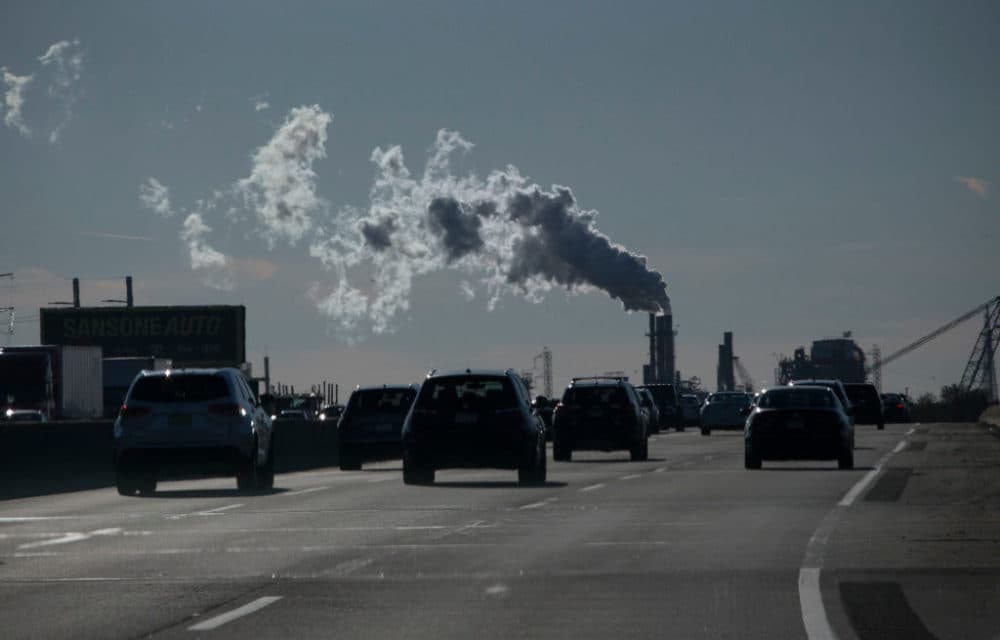Advertisement
Covering Climate Now 2021
How To Cut U.S. Emissions In Half By 2030

President Biden announced an ambitious goal Thursday to cut greenhouse gas emissions in the U.S. in half by 2030.
Doing so will require an overhaul of the economy and significant changes to the energy and transportation sectors. It will also mean change for everyday Americans.
Nathan Hultman, director of the Center for Global Sustainability at the University of Maryland, co-authored a roadmap to reducing emissions by at least 50%.
To start, he says half of the power grid would need to come from renewables.
Right now, renewables make up 20% of the U.S.’s electrical capacity, which is up from 15% in 2012. The good news is renewable costs have “dropped precipitously” over the past few years, he says, and renewable infrastructure sometimes can be cheaper than fossil buildouts.
“Deploying clean energy is actually something that is a relatively straightforward proposition. There's a lot of support for it,” he says. “People tend to like renewable and clean electricity, and there's a lot of benefits of reduced air pollution and improved health.”
There are more than 200 coal plants, which are massive polluting sources, still operating in the U.S. Hultman says most, if not all, would need to be disbanded. Trends show multiple market forces are driving out aged coal plants anyways, he says, such as the decreasing cost of renewable technology and negative impacts on air quality.
Experts are also “thinking about enhancements to the amount of electricity we need to consume to produce the same amount of service,” he says. He points to LED lighting, which has “dropped dramatically in cost” and is now a commonly known product in American households.
Transportation is another sector targeted in Biden’s infrastructure plan — something Americans are likely to feel more acutely than changes to the electricity grid. Hultman says two-thirds of new cars and SUVs would need to be electric to meet the White House’s goal for slashing emissions by the end of the decade.
Advertisement
Fewer than 1% of cars on the road today are powered by batteries. He’s hopeful that 60% to 65% of new vehicles will be electric by 2030.
“Right now, when we look at EVs or electric vehicles, we see that they're really on the cusp of becoming mainstream. There's a lot of demand for new EVs,” he says. “And frankly, a lot of auto manufacturers have said they're getting out of gasoline, internal combustion engines by 2030 or 2035.”
Cars are expensive, meaning many Americans hold onto their vehicles for years and years. The average age of U.S. cars on the road is 11 years. To bolster support for a societal pivot to electric cars, Biden’s plan calls for a dramatic increase in charging stations across the country and providing grants, loans and tax incentives.
Hultman’s roadmap outlines other ways for the U.S. to meet its targets, like cutting carbon in cement, chemical and agricultural industries. Planting trees and expanding our forests are “relatively straightforward” solutions, he says, and serve as a “waypoint in what we imagine will be a longer trajectory toward a net-zero emissions economy by roughly 2050.”
These reinvestments “are certainly challenging and ambitious,” he says, adding Congress can soften the transition by offering tax credits.
Ultimately, the plan will require an all-hands-on-deck approach, he says, with fundamental industries, all levels of government and American society at large playing a role in this shift.
This story is part of Covering Climate Now, a global journalism collaboration of more than 400 news outlets committed to better coverage of the climate crisis. This year's theme is "living through the climate crisis."
Dean Russell produced and edited this interview for broadcast with Todd Mundt. Serena McMahon adapted it for the web.
This segment aired on April 23, 2021.

